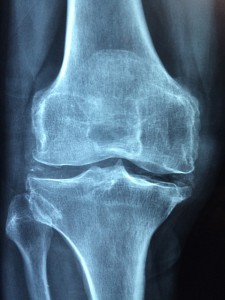We all know our bodies are made to move, but when you have a problem with one of your joints, it can not only make your daily routine painful, it can also prevent you from doing the things you  love. We asked local joint expert Scott Cooper, MD of Mercy to weigh in on our top 5 questions about maintaining healthy joints (for ourselves and our kids).
love. We asked local joint expert Scott Cooper, MD of Mercy to weigh in on our top 5 questions about maintaining healthy joints (for ourselves and our kids).
If your kids are playing competitive sports, be sure to pay close attention to Dr. Cooper’s answer to the fourth question. He gave us some compelling information about the dangers of overspecialization in youth sports.
How can I be sure that my work-out isn’t damaging my joints or causing long-term problems?
I’d say the best way to avoid joint damage while working out is to listen to your body. Muscle soreness is different than joint pain. Some soreness is to be expected after healthy, vigorous exercise, but if you have a knee, for example, that hurts and swells after a workout, that’s NOT normal.
Some people find that they’re able to walk a certain distance every day and be fine, but if they exceed that distance much, they hurt. I tell those patients to find out what and how much they can do  without such pain, and stick to those limits. Joints are made to move, and exercise is not inherently harmful to them. In fact, it’s good for them, but if it hurts, it’s telling you to slack off, and if it’s significantly limiting, it’s probably worth a visit to the doctor to see what’s wrong.
without such pain, and stick to those limits. Joints are made to move, and exercise is not inherently harmful to them. In fact, it’s good for them, but if it hurts, it’s telling you to slack off, and if it’s significantly limiting, it’s probably worth a visit to the doctor to see what’s wrong.
If I have a sore joint after a work-out or after an accident, what are the best at-home treatments?
Remember the acronym RICE: Rest, Ice, Compression, and Elevation. For the first 48 hours or so after an acute injury such as an ankle sprain, or even minor soreness after a workout, RICE is the thing, but remember that moderation is key. Don’t give yourself frostbite with an ice pack, and don’t put an ACE bandage on too tightly.
What are some of the most common ways people hurt their joints as they get older?
Older people most commonly hurt their joints through trauma from simple falls. Fractures involving the wrist and hip are most common, but injuries around the knee and shoulder are not rare.
What are the biggest risk factors for kids who develop joint problems?
The biggest problem in youth sports today is overspecialization — and it’s a HUGE problem, so huge, in fact, that one of the biggest names in orthopaedic sports medicine, Dr. James Andrews, has  made it his mission to put a stop to it. For example, there are people who think that the explosion in the incidence of ulnar collateral ligament injuries resulting in “Tommy John” surgery in pitchers is partly a result of these young people pitching too much from a very young age.
made it his mission to put a stop to it. For example, there are people who think that the explosion in the incidence of ulnar collateral ligament injuries resulting in “Tommy John” surgery in pitchers is partly a result of these young people pitching too much from a very young age.
Parents need to realize that sports are for fun, that the odds of their kid being a professional athlete are minuscule, and even for those that are going to make it all the way to “the Bigs,” it is NOT helpful to focus exclusively on one sport (or even one part of one sport). It can actually be harmful.
Participating in other sports not only helps prevent overuse injuries and mental/emotional burnout, it can actually enhance overall athletic ability. Kobe Bryant was an accomplished soccer player. Ohio State coach Urban Meyer can show data that his football players usually played other sports growing up. There are countless examples.
What are the top 3 things moms could do to help their children prevent or avoid having joint problems?
1. Do NOT overspecialize, especially in youth sports. (See answer above for more info on this problem.)
2. Insist on good coaching of proper techniques.
3. Make sure the child gets enough rest from a particular activity (such as pitching).
Our thanks to Dr. Scott Cooper for his insight and helpful tips. To schedule an appointment with Dr. Cooper, call 479- 271-9607 or click here for more info about him on the Mercy website.

